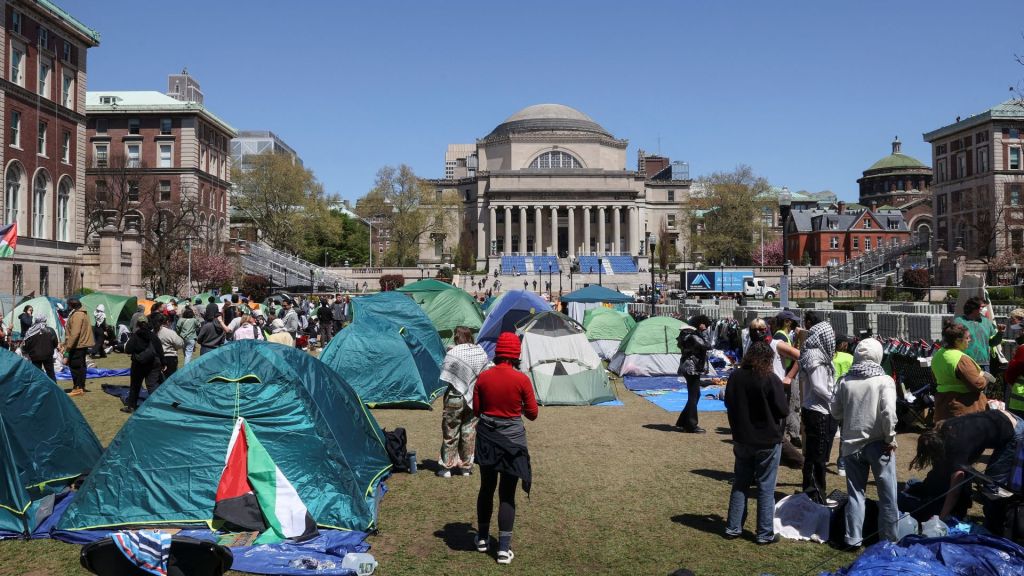
Commentary
-
Our commentary partners will help you reach your own conclusions on complex topics.
Hey, everyone, Peter Zeihan here coming to you from the trail in Colorado. Today I wanted to talk about electricity. We’ve got a lot of things going on in California and Texas and France and in Germany, we’re going to try to knock them down and knit them together into a story that hopefully makes some sense. So the biggest issue is that on the 11th of July, the Russians shut off something called Nord Stream, one, which is the primary flow of natural gas from Russia into Germany direct goes under the Baltic Sea. Natural gas provides about 15% of the electricity that the Germans use. And it is also that natural gas is also used as the base of their heavy industry, which is really the foundation for everything in German manufacturing, and to lose it, even if it’s temporary is a big deal. Now, the Russians say it’ll be back online in 10 days, I’m not sure anyone believes them. Well, we’ll know in 10 days. But regardless what happens with Nord Stream, I would anticipate the other natural gas pipelines that crossed Belarus and Ukraine on their way to Germany are also going to go offline this year, either due to war or partisan damage. So one way or another, the Germans have to figure out how to do without, they’re trying to bring in LNG from some new facilities as quickly as they can. They’re hoping to have those up and running by the end of the year. But any liquefied natural gas they bring in is something that’s not going somewhere else in the world. So there’s no way that this gets solved without much higher prices. In anticipation of that. The French have preemptively nationalized their electricity company electricity difference, or I guess I should say renationalized it. The reason for doing that is so that the state can directly control the rates that are charged to customers. France has always been a more populous place than Germany, and it shows in their power sector. Third up is Texas, Texas had some near record heat over the course of the last week or two, I was unfortunate enough to be in Dallas a few days ago, it was a balmy 110 Burn. And so the whole system nearly crashed, we almost had rolling blackouts in central and northern Texas because of the heat. And then finally, you’ve got California, which is pushing for a 100% green grid. And as part of the debate, they are looking to take Diablo Canyon, which is a nuclear power plant, which provides about 10% of their power for the state offline. Now, what do all these have in common? Well, everyone, all four states are in some way participating in some sort of a green transition, different policies, different places, different fuel mixes, but it’s all happening. And in some places, this works. And in some places, this doesn’t. So let’s start with a doesn’t and talk about Germany. Germany is neither a sunny nor windy country, they’ve invested about 2 trillion euros in building out solar and wind and transmission capacity. And yet it only generates about 10% of their electricity needs by nameplate, all of those facilities should be generating 200% of their peak demand. But instead, it’s only 10%. Why so bad? Well, like it’s not just that it’s not just windy. And it’s not just that the country is not sunny. They’re also to be perfectly blunt, and doing some Enron esque things with their statistics. So for example, the kind of coal that the Germans use is called lignite. It’s 20%. Water by weight, it is the least efficient fuel out there. And with the natural gas from Russia going offline, the Germans are mining and burning more of it, it is now their primary source of electricity generating capacity. It takes 24 hours to spin up a lignite mine because the stuff is so wet and so calorie not dense. So when the sun does come out in Germany, they unplug the turbines that are generating the coal based power and only allow the solar power into the grid. They then don’t count the emissions from coal in that environment. But then as soon as the sun goes down, they have to plug it back in, and we go back to where we were. So the Germans just flat out lying about their statistics, and honestly not doing a very good job. But there are a lot of people in the green community who continue to praise the Germans as the model we should follow even though emissions have gone up in Germany since their commitment to the green transition. France is a different story. And it’s a better story. It’s a son of your country. It’s a wind of your country, not by a huge margin, but enough to make a difference. And they get a substantial portion of their electricity from nuclear power. So they’ve got this baseload that is green friendly, at least from a carbon emissions point of view. Although if you don’t like nucular in Germany, you’re not gonna like it in France, either.
Texas is where things get a little weird. Texas is a very sunny place, especially West Texas that is part of the American Southwest, that is the or the second sunniest location on the North American continent. And Texas is also in the Great Plains, which is definitely the windiest location in the western hemisphere. So while Texas doesn’t have an official green program, they’ve been adding solar and especially wind at huge volumes, and it’s really helped Also, as the turbines go higher and higher and higher above about 700 feet, you’re tapping into stronger and more reliable wind currents, which means you can even lose it, use it for baseload combat capacity, it’s not so intermittent. And then that brings us to California. Now, the Hang on, I gotta switch arms. No, this one’s gonna go so long. One of the fun things about California is its policymakers are a little wackadoo from time to time. But one of the things that California does not get enough credit for is that the bureaucrats have been imbued with sufficient power to move the goalposts when it’s clear that the technology is not working out. So the state legislator in Sacramento, we’ll pass green mandates. And if 510 years down the line, it looks like the technology is not mature enough, they thought the bureaucrats have the authority to move those goalposts a little bit. So it puts pressure on industry without it necessarily being a deathblow. So I think a lot of the concerns that folks have about California experiencing wide scale blackouts, because of the green transition, are a little overblown. It’s something we should keep an eye on, it’s not something that I’m saying is not a risk. But California has developed a legal structure for dealing with this. We need to compare though California, very sunny state, moderately windy state, with Germany, not sunny or windy at all. They have very similar mandates for their green tech. And it really doesn’t work in Germany at all. We’re seeing that right now with all the coal coming back online. And at least to this point, refusal to bring nucular back online, we’re going to see a broad scale failure in Europe, particularly in Germany, of all things green probably this year, and certainly next year, the winter is going to probably be pretty harsh. But in California, it’s a different picture. Not only does the geography work better for green tech, and we have a more flexible legal system. There’s also some secondary impacts that help in places like California and Texas that don’t in Germany, it has to do again with geography. peak demand in Germany, is in the winter. At night, when solar can’t help at all. peak demand in Texas and California is in the summer, during the day. And if you have solar panels on your roof, you are preventing that solar gain from going into your attic. I used to live in Texas, I went up and I took the thermometer. And I discovered that before and after my solar panels got put up, the temperature difference in my attic was typically 30 degrees and in the heat of the summer, that takes a lot of load makes up words, it makes it a lot easier for you to cool your house, if the solar energy is not hitting the roof in the first place. California and Texas can count on that during not so much. So where does this take us? Well, we’re going to see the green programs of Europe and especially of Germany probably collapse this year, that’s going to be shown to be hollow The technologies are going to be shown to not work very well at all in those geographies, we’re gonna see carbon emissions expand considerably. But you’re gonna move over to California and everything is gonna be just more or less hunky dory. The green movements going to have about two years to digest this. And hopefully the outcome of this for the green movement will be a recognition that geography matters, you know, the first rule of geopolitics. And if that’s the case, then maybe we’ll get some smarter policies and a whole lot of places, New York State, by the way, very similar situation to the Germans. But California can show a way forward. And if the greens can realize that place matters, and where you get your power matters, then Diablo Canyon probably won’t shut down. And we can have a new model of an integrated system that is more carbon friendly for the environment. Without the risks as massive rolling Brown and blackouts. That’s probably where this is gonna go. It will mean that the nice will come out within the green community between the ideologues who think that all solar is good, even if it’s facing north at the North Pole in the middle of night. And those that can you know, actually do math like me. Anyway, that’s it for now. Everyone, have a great day. Talk to you soon.
-
Peace between Israel and Iran, at least for now
A series of recent airstrikes between Israel and Iran inflamed fears of a wider regional war erupting in the Middle East. That concern now seems to have paid off, after third-party countries around the world successfully intervened and talked down military hardliners in both Israel and Iran in order to avoid such an outcome. Israel’s…
-
Global internet in a precarious state, but that could be a positive
Over 500 underwater cables span over 870,000 miles worldwide, serving as the foundation of the modern global internet. Despite their critical role in facilitating communication, these cables often go unnoticed, even as the amount of data transmitted through them has surged. So what happens if the cables fail? Straight Arrow News contributor Peter Zeihan contends…
-
Water wars are an unlikely future
Foreign policy writers have long warned of the possibility that clean drinking water might become “the next oil” — that is, that major wars might be fought around the globe over access to potable water. With expanding populations and finite water supplies, these critics argue that humans will inevitably fight each other to secure drinking…
-
Are Russia’s hypersonic missiles too good to be true?
Russia has reportedly used five of its new hypersonic Zircon missiles to target Kyiv since the beginning of 2024. Russia claims that these sea-based missiles, boasting a range of 625 miles and capable of traveling at nine times the speed of sound, are part of its family of “superweapons” aimed at penetrating the U.S. missile…
-
Norway sending F-16s to Ukraine
In recent months, the need for Ukrainian air defenses has grown more urgent. As U.S. aid is unable to pass through Congress, Ukraine’s European allies have been stepping up to provide what they can. Norway is now the latest nation to pledge F-16s to Ukraine, not only to defend Ukrainian airspace, but also for the…
Latest Stories
-
 Getty Images
Getty Images
Trump could lose Secret Service protection if found guilty
-
 Getty Images
Getty Images
AI may save lives with new weather forecasting technology
-
 Straight Arrow News
Straight Arrow News
Australia seeks global ban on violent video posted on X; Musk pushes back
-
 Reuters
Reuters
Voyager 1 sending data to Earth for first time in five months
-
 Getty Images
Getty Images
White House imposes staffing requirements for nursing homes
Popular Opinions
-
In addition to the facts, we believe it’s vital to hear perspectives from all sides of the political spectrum.
Latest Opinions
In addition to the facts, we believe it’s vital to hear perspectives from all sides of the political spectrum. We hope these different voices will help you reach your own conclusions.
The opinions published in this section are solely those of the contributors and do not reflect the views of Straight Arrow News.

















Latest Commentary
We know it is important to hear from a diverse range of observers on the complex topics we face and believe our commentary partners will help you reach your own conclusions.
The commentaries published in this section are solely those of the contributors and do not reflect the views of Straight Arrow News.
Peter Zeihan
Geopolitical StrategistGlobal internet in a precarious state, but that could be a positive
Water wars are an unlikely future
Are Russia’s hypersonic missiles too good to be true?
Dr. Frank Luntz
Pollster and Political Analyst‘Take the job seriously’: Why Americans are fed up with Congress
‘If we can shrink it, it will stop growing’: Americans talk debt, deficit
‘I don’t think they care’: Undecided voters explain their reasons
Pete Ricketts
U.S. Senator for Nebraska